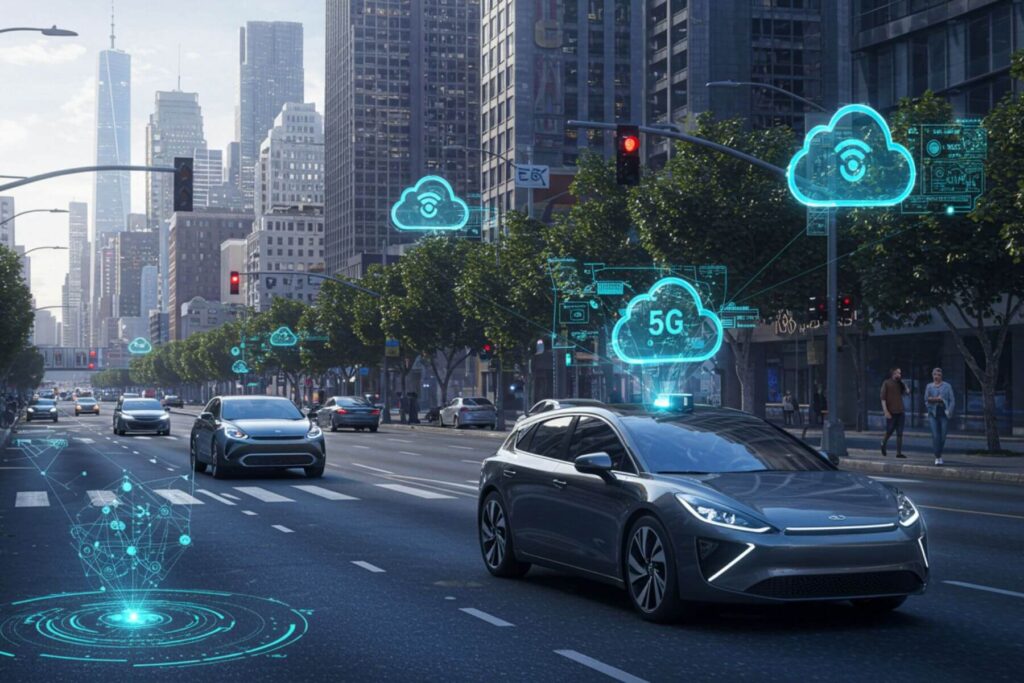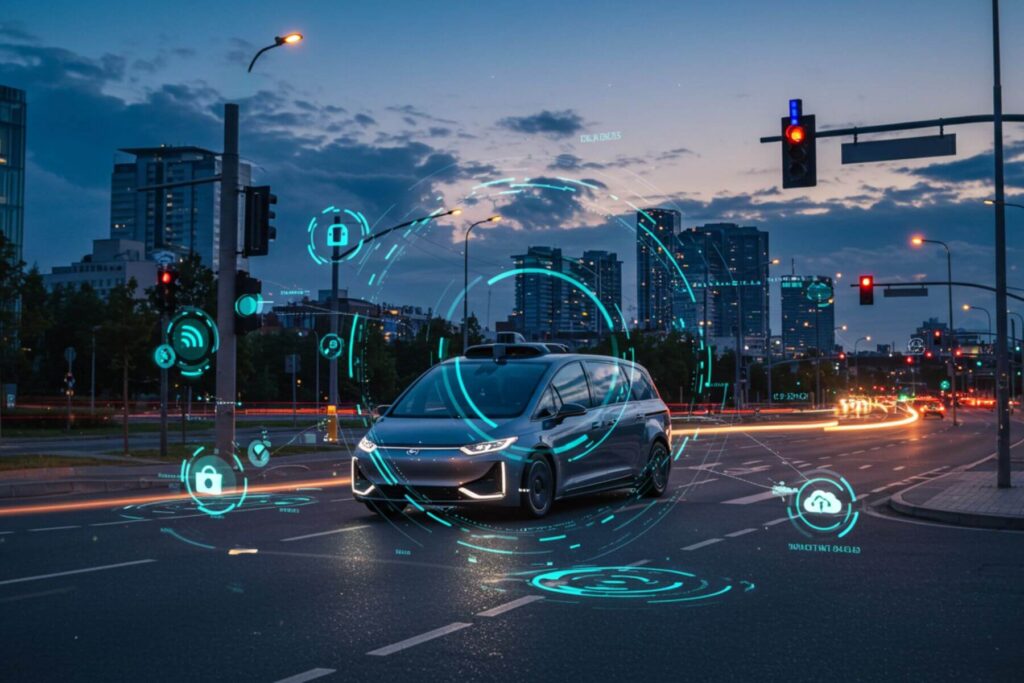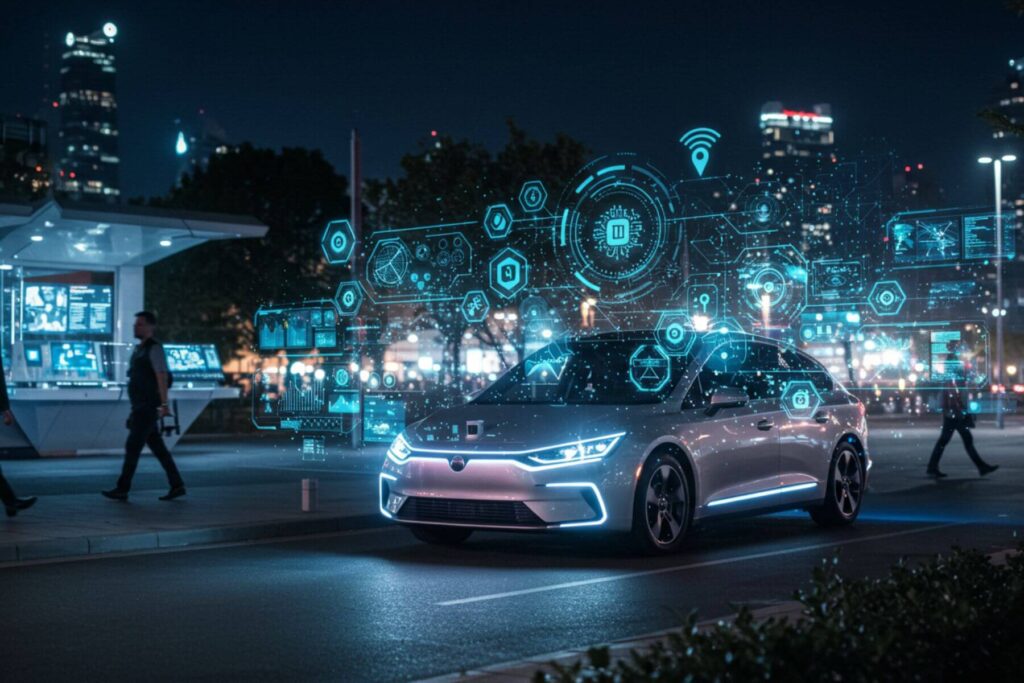The rise of robotaxis is one of the most exciting developments in transportation. These self-driving taxis are now being tested and used in many cities around the world. But what’s making them faster, smarter, and safer in 2025? A big part of the answer is 5G. This next-generation wireless network is helping robotaxis reach new levels of performance. Here are ten ways 5G is changing the game for robotaxi technology in 2025.
1. Faster data speeds for real-time decisions
In a robotaxi, every second counts. These vehicles must make fast decisions to avoid accidents, respond to changing traffic, and deliver passengers efficiently. With 5G, data can be sent and received almost instantly. This allows robotaxis to react faster than ever before. Whether it’s identifying a pedestrian crossing the road or adjusting to a sudden traffic jam, the quick data transfer enabled by 5G ensures smoother and safer rides.
2. Lower latency for instant communication
Latency is the time it takes for data to travel from one point to another. Traditional 4G networks can experience delays, which are unacceptable when dealing with autonomous vehicles. In 2025, 5G has reduced latency to just milliseconds. This near-instant response time helps robotaxis communicate with infrastructure, other vehicles, and control centers without delay. It leads to better coordination and reduces the risk of accidents.
3. High bandwidth for sensor integration
Robotaxis are equipped with many advanced sensors, including LiDAR, radar, cameras, and GPS. These systems produce massive amounts of data. In the past, it was hard to process and transmit all this information in real-time. Thanks to 5G’s high bandwidth, robotaxis can now handle this data load with ease. This means better awareness of their surroundings, improved navigation, and faster responses to dynamic road conditions.
4. Improved Vehicle-to-Everything (V2X) communication
5G supports Vehicle-to-Everything (V2X) technology. This allows robotaxis to talk to other vehicles, traffic lights, road signs, and even smartphones. In 2025, V2X plays a key role in preventing accidents and easing traffic congestion. For example, a robotaxi can get a signal from a traffic light before it turns red or receive warnings about a crash ahead. This connected system creates a smarter and more cooperative traffic environment.
5. Better cloud connectivity for remote monitoring
Robotaxis don’t just rely on onboard systems. Many are also connected to the cloud, where remote operators and AI systems help guide and monitor them. In 2025, 5G makes cloud connectivity more reliable and faster. This allows real-time updates and support for robotaxis even in complex or unexpected situations. Remote teams can step in when needed, and software updates can be sent instantly to improve performance.
6. Enhanced mapping and localization
Accurate maps are essential for robotaxis to know where they are and where they’re going. With 5G, mapping data can be updated in real-time. This is especially helpful in urban areas where construction, road closures, or temporary obstacles may appear suddenly. Robotaxis in 2025 use 5G to receive precise location data and live updates to maps. This reduces navigation errors and ensures they stay on the correct route.
7. Seamless passenger connectivity
Passengers riding in a robotaxi expect more than just a safe trip; they want a connected experience. In 2025, 5G provides passengers with fast and reliable internet access during their rides. Whether it’s streaming music, making video calls, or checking real-time traffic updates, the ride becomes more enjoyable. Robotaxi companies also use this connectivity to deliver trip updates and personalized experiences, adding value to every journey.
8. Smarter fleet management
Managing a large fleet of robotaxis is complex. Companies must track vehicle health, route efficiency, battery levels, and more. With 5G, fleet managers in 2025 can monitor every vehicle in real-time. They can detect problems early, reroute vehicles based on demand, and balance energy usage across the fleet. This smarter management leads to fewer breakdowns, better service, and lower operating costs.
9. More reliable performance in crowded cities
Urban areas present unique challenges for robotaxis: tall buildings, heavy traffic, and signal interference can disrupt communication. But 5G is built to perform well even in dense environments. It uses small cell towers and advanced signal processing to ensure strong and stable connections. In 2025, this reliability helps robotaxis navigate busy streets, handle complex intersections, and stay connected no matter how crowded the city gets.
10. Enabling future AI and machine learning capabilities
5G doesn’t just make today’s robotaxis better. It also prepares them for the future. As AI and machine learning systems become more advanced, they will need faster access to data and better tools for training and learning. With 5G, robotaxis in 2025 can access powerful cloud-based AI models in real-time. This leads to smarter driving, quicker learning from past experiences, and faster adoption of new safety features.
Bottom line
In 2025, 5G is proving to be a powerful force behind the robotaxi revolution. It’s not just about faster internet; 5G improves every part of robotaxi performance, from safety and navigation to passenger experience and fleet operations. As this technology continues to spread across cities, robotaxis will only become more advanced, more reliable, and more integrated into our everyday lives. The journey of robotaxis is just beginning, and 5G is helping drive it forward.



